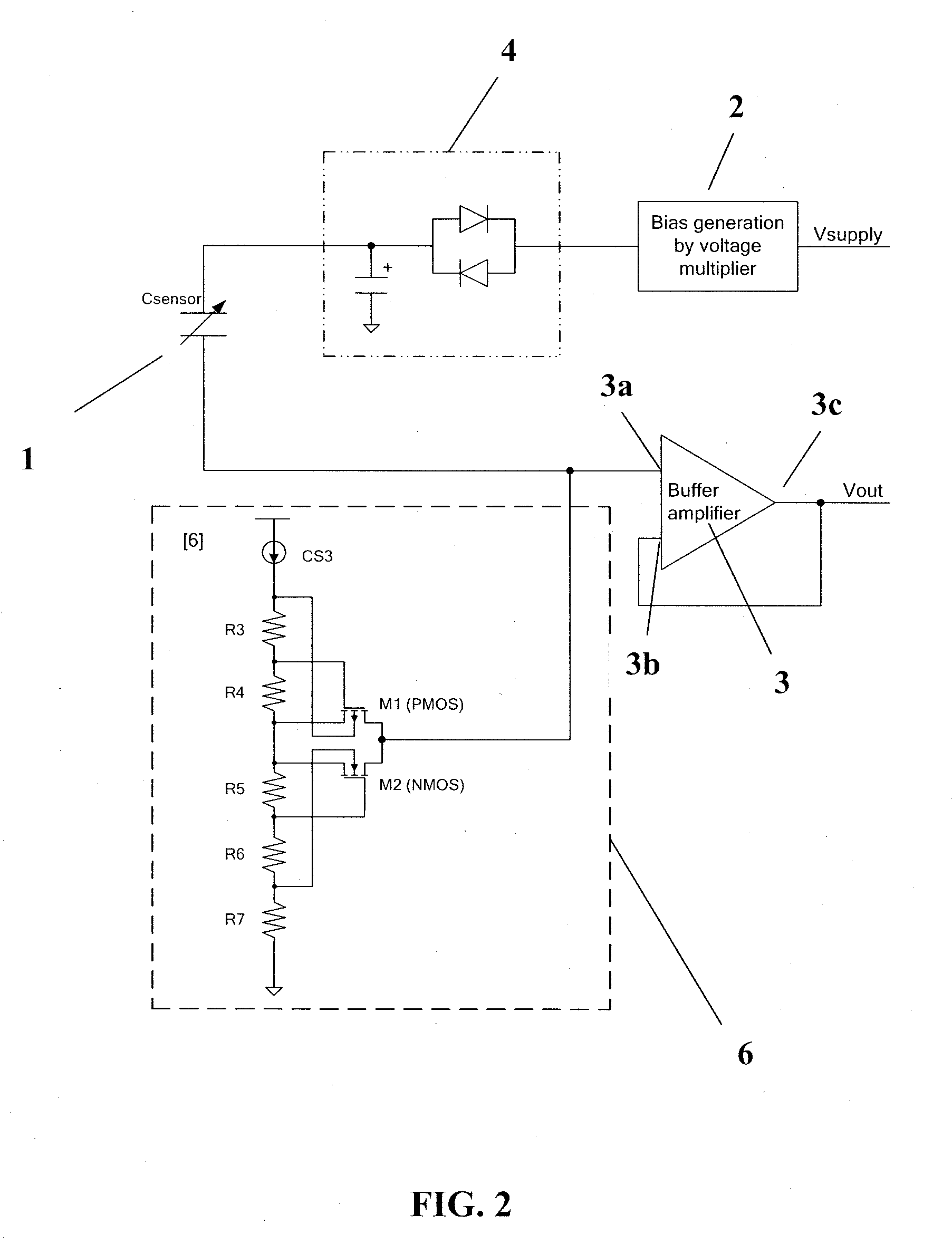Device and method for biasing a transistor amplifier
a transistor amplifier and device technology, applied in the field of devices and methods for biasing transistor amplifiers, can solve the problems of difficult to provide a high impedance value in an area-efficient manner, limited noise bandwidth, and not always available or practical, and achieve the effect of facilitating subdivision of reference current ir
- Summary
- Abstract
- Description
- Claims
- Application Information
AI Technical Summary
Benefits of technology
Problems solved by technology
Method used
Image
Examples
first embodiment
[0070]Referring firstly to FIG. 1, a device for use in biasing a transistor amplifier with a DC-voltage signal is shown operatively coupled to a buffer amplifier (3). The device and buffer amplifier (3) are typically fabricated on an integrated circuit.
[0071]In one embodiment, the buffer amplifier (3) is a FET amplifier having a first (positive) input terminal (3a), a second (negative) input terminal (3b) and an output terminal (3c). The output terminal (3c) is bootstrapped to the second input terminal (3b) via a feedback loop (not shown) to form a unity-gain or buffer amplifier.
[0072]A capacitive sensor (1) is operatively coupled to the first input terminal (3a) of the buffer amplifier (3). By way of example only, the capacitive sensor (1) can be part of an electret microphone. The capacitive sensor's (1) capacitance varies according to a received input signal—hereinafter referred to as Vsupply—which is to be transduced.
[0073]Vsupply is fed to the capacitive sensor (1) from a volta...
second embodiment
[0090]FIG. 2 of the drawings depicts a second embodiment device operatively coupled to a buffer amplifier (3).
[0091]It is a low pass network consisting of resistors (R3-R7), current source (CS3) and MOSFETs (M1, M2). Current source CS3 provides a bias current to resistors R3, R4, R5, R6 and R7 whereby a fixed voltage bias is able to be selected. As shown in FIG. 2, the configuration of M1, which is a PMOS device, and M2, which is an NMOS device, combines to act as very high value impedance elements. The conductivity of M1 and M2 is controlled by the respective gate voltages applied to M1 and M2 and determined by the sub-threshold properties of M1 and M2.
[0092]At an application level after the design is fabricated, the conductivity of M1 and M2 can be varied by trimming the resistor R4 and R5 or by connecting the gates of M1 and M2 to different potentials on the resistive ladder so as to alter an overdrive potential between gate-to-source of M1 and M2 respectively.
[0093]The low-pass ...
PUM
 Login to View More
Login to View More Abstract
Description
Claims
Application Information
 Login to View More
Login to View More - R&D
- Intellectual Property
- Life Sciences
- Materials
- Tech Scout
- Unparalleled Data Quality
- Higher Quality Content
- 60% Fewer Hallucinations
Browse by: Latest US Patents, China's latest patents, Technical Efficacy Thesaurus, Application Domain, Technology Topic, Popular Technical Reports.
© 2025 PatSnap. All rights reserved.Legal|Privacy policy|Modern Slavery Act Transparency Statement|Sitemap|About US| Contact US: help@patsnap.com



